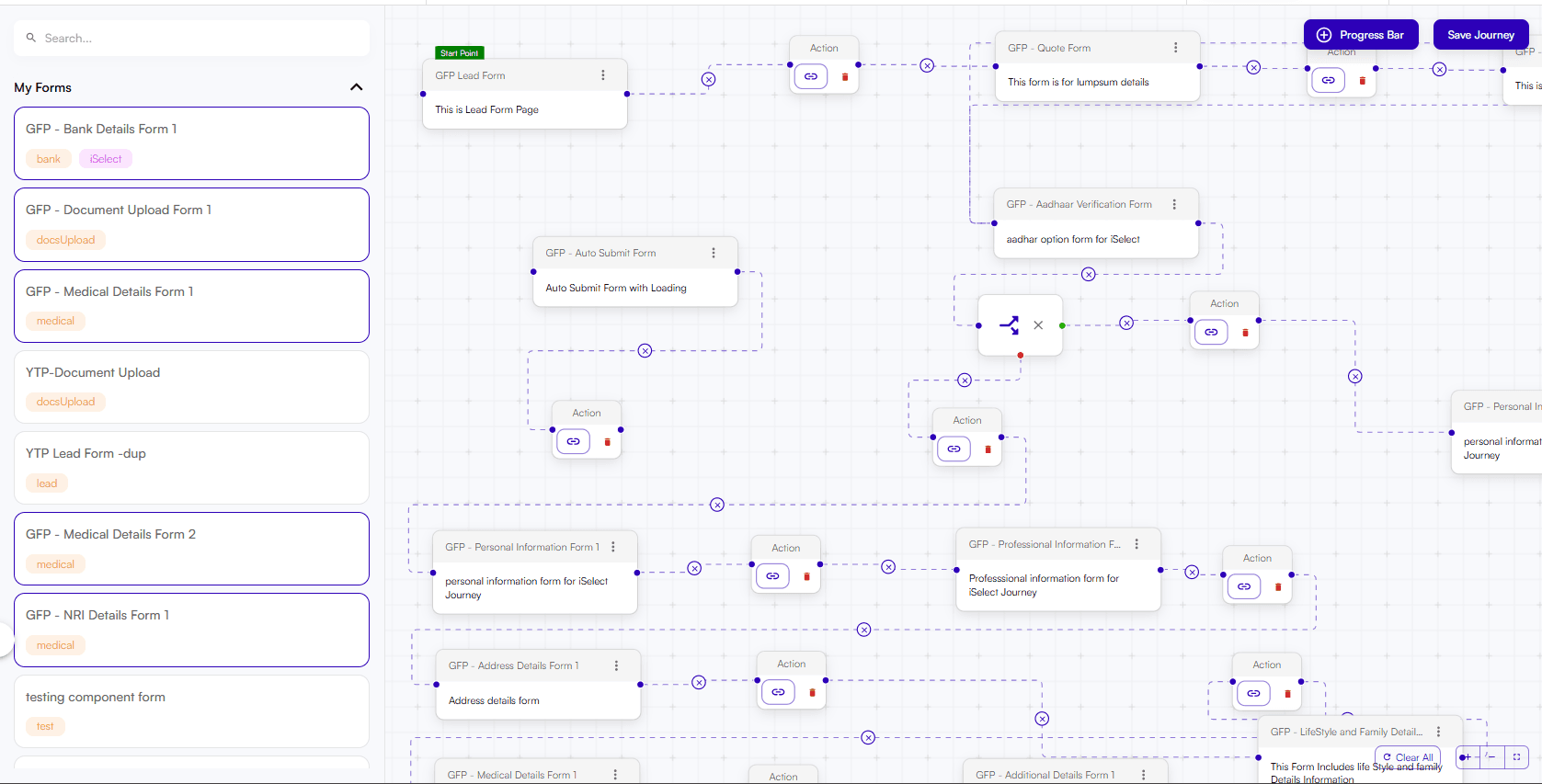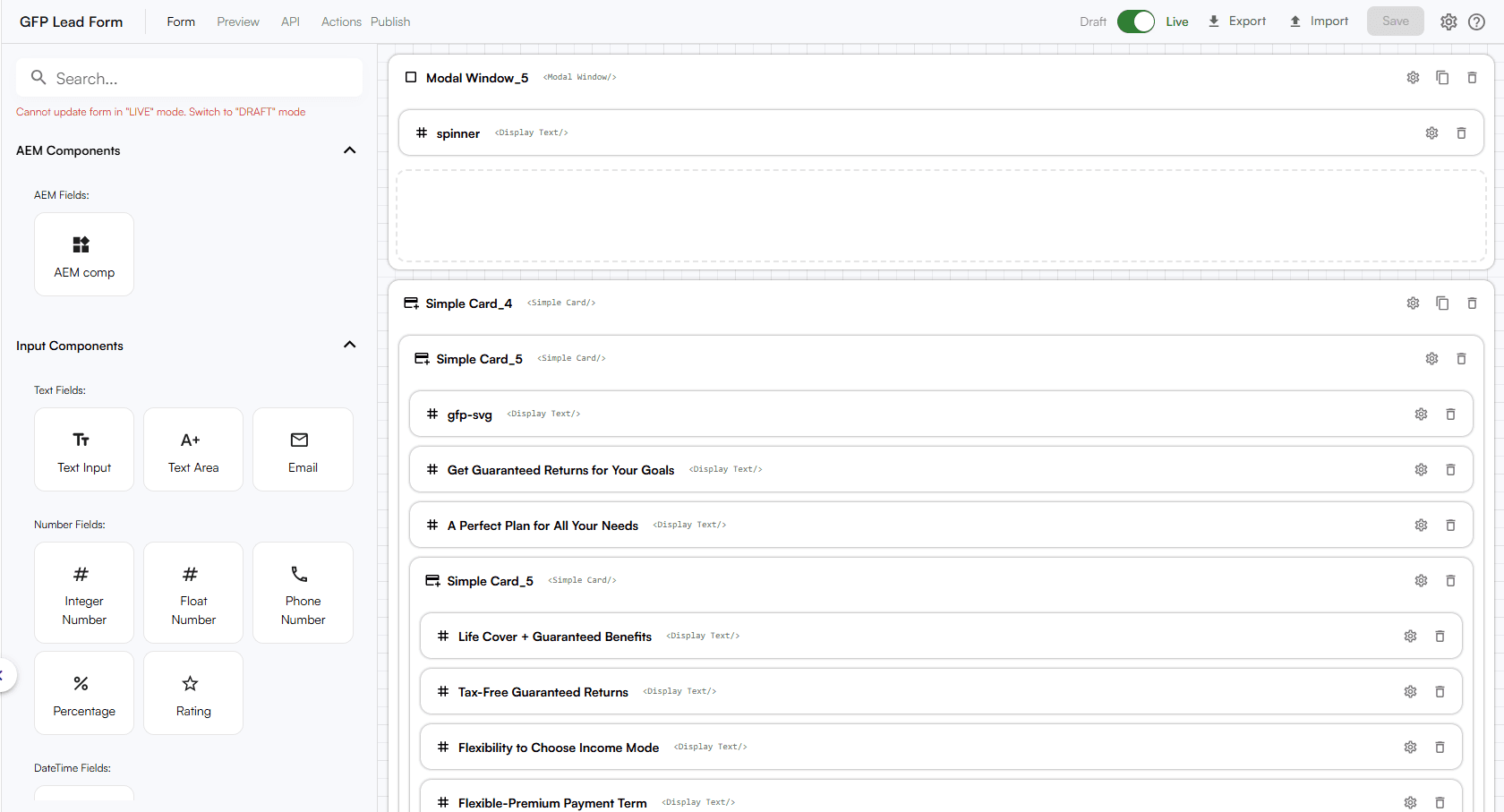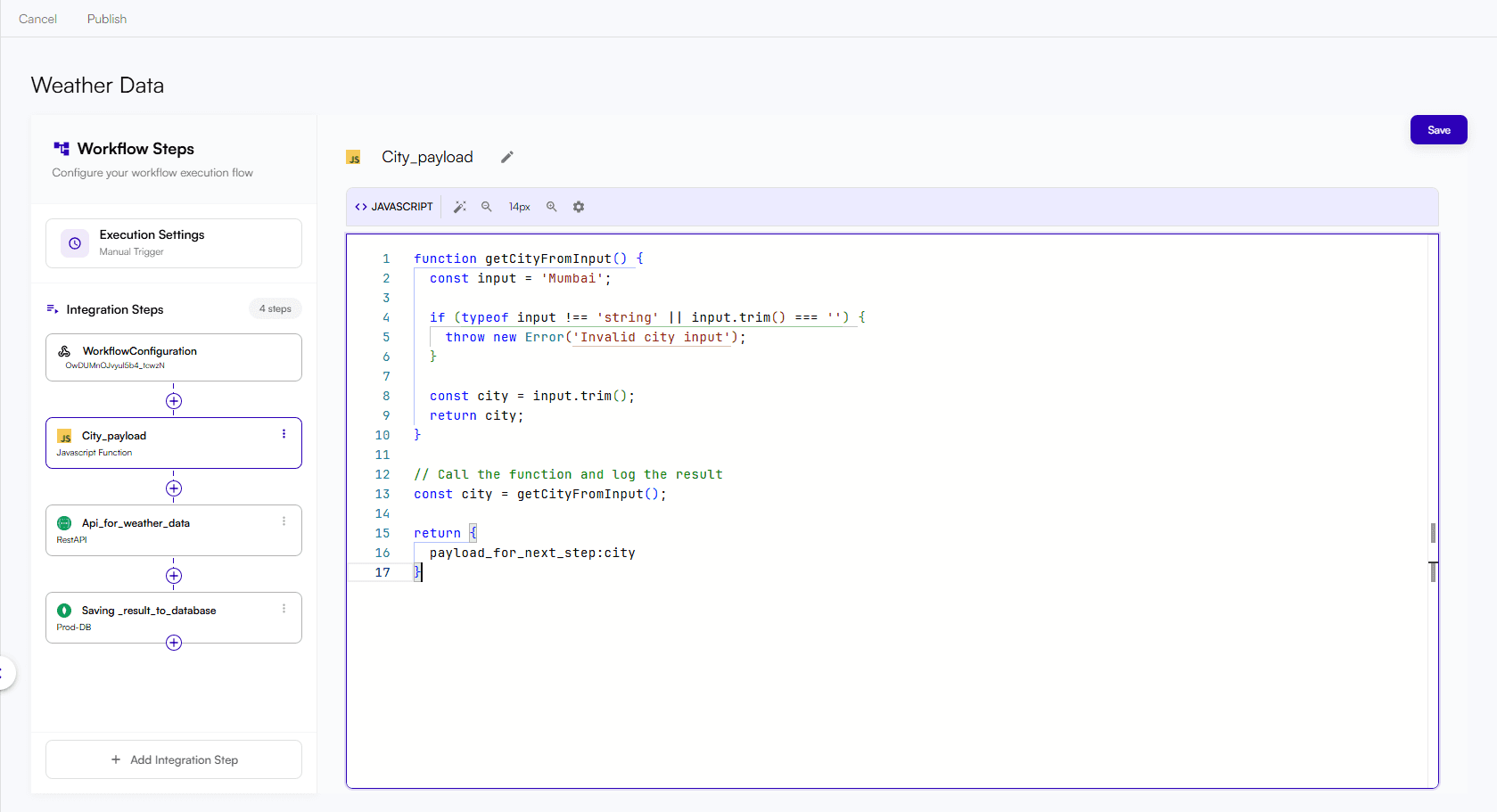Low Code Form Builder
Designed and built a modular low-code form builder tailored for a leading insurance company. The system enables internal teams to dynamically build complex multi-step workflows without writing code.

Project Gallery
Explore different aspects and features of the project through this visual showcase.

How form building look like

Theme customization for forms

Custom Workflows
Project Overview
Designed and built a modular low-code form builder tailored for a leading insurance company. The system enables internal teams to dynamically build complex multi-step workflows without writing code.
Key Features
Visual Drag-and-Drop Editor
A user-friendly interface that allows internal teams to build forms by dragging and arranging components like inputs, dropdowns, sections, etc., without writing code. Supports nested layouts such as tabs, accordions, and cards.
Conditional Logic Engine
Allows forms to react to user input dynamically. For example, showing or hiding fields, skipping steps, or changing validation rules based on prior answers — all configured through a rule builder or low-code expressions.
Multi-Step Form Journeys
Supports breaking down long forms into manageable, step-by-step flows. Each step can have its own schema, validation, and conditional navigation logic to enhance the user experience.
Theming & Custom Styling
Admins can fully customize the form UI (colors, fonts, spacing, etc.) to match brand guidelines using a live theming editor — no need to touch CSS directly.
Workflow Integration Hooks
Easily connect form submissions to external systems like CRMs, underwriting engines, or internal APIs. Configurable webhook triggers, email alerts, or serverless functions can run after submission.
Analytics & Submission Tracking
Tracks form performance, completion rates, and error drops across steps. Helps identify friction points or bottlenecks using internal dashboards.
Challenges & Solutions
Challenge
Handling Deeply Nested Layouts (e.g., Tabs inside Accordions inside Cards) Solution:
Solution
Implemented a recursive layout rendering engine using React, where each layout component could accept children of any other type. Used context and schema-based rendering to maintain state and validation across nested hierarchies.
Challenge
Enabling Non-Technical Users to Build Dynamic Forms
Solution
Designed an intuitive drag-and-drop UI with low-code configurability. Introduced a JSON-based schema behind the scenes, but allowed users to manipulate it visually — eliminating the need to write code while preserving power.
Challenge
Securely Handling Sensitive Insurance Data
Solution
Added encryption for sensitive fields, implemented token-based access control, and ensured compliance with data privacy regulations. The architecture followed a zero-trust principle.